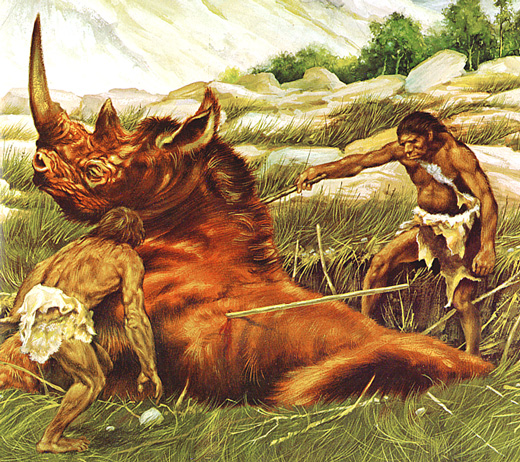Technology Development during the Prehistoric Time

In the primitive beginnings of mankind, technology consisted of vital tools and weapons for survival, as opposed to leisurely items. Stone inventions like spears, knives, and axes were considered the most prominent technology of the prehistoric age. Fire was also a key factor in the production of these tools and weapons. One popular stone used for these forms of prehistoric technology was silcrete. In its natural state it is nearly impossible to work into sharp forms or shapes; however, using special techniques with fire, people found a way to shape the silcrete into spearheads, knife blades, and other sharp objects. This process is called pyroengineering.
Projectile technology was also an advancement even in prehistoric times. Hunters used stone-head spears to take down large animals, as depicted in the picture above; however, they used a second wooden rod with which they would launch the spear in order to keep their distance from the beast. This was called an atlatl, and it allowed for improved accuracy with which to propel the spear.
The stone axe was also a popular tool of prehistory. It was used for cutting down trees or cutting wood into smaller pieces. The axe was a relatively simple invention, consisting of a wooden handle and a stone head.
Another wood-working invention was the adze, which was similar to an axe in design and function. The shape of the adze blade was different though. Instead of a narrow and sharp vertical blade, it was a slim, wide horizontal blade. Instead of cutting straight into a piece of wood, the adze was used by swinging the blade in the wood horizontally in order to produce thin strips.
In order to till the land, prehistoric farmers used a stone hoe. It consisted of a flint or chert stone head, a wooden handle, and organic twine to hold it together. Stone hoes had a broad edge with multiple chips and a triangular or leaf shape. The idea of the stone hoe was to allow prehistoric men to work the land overhand.
